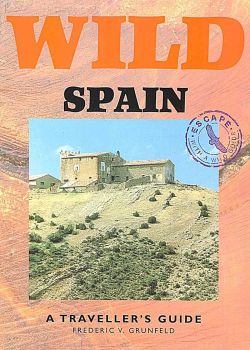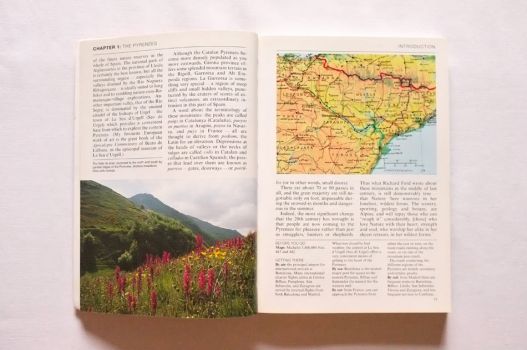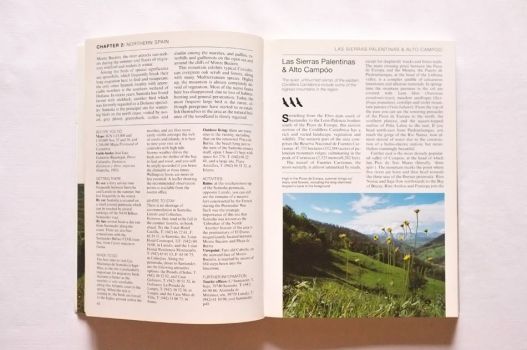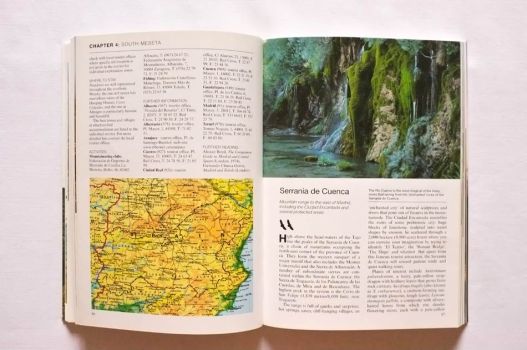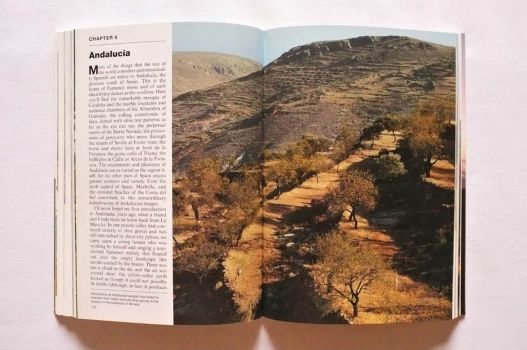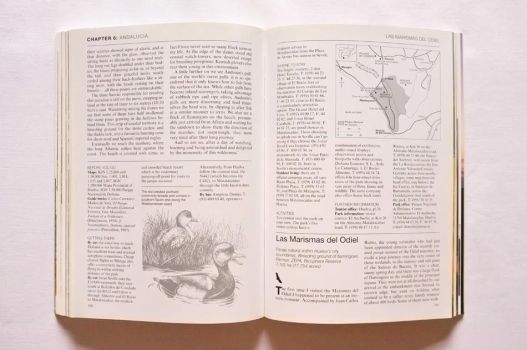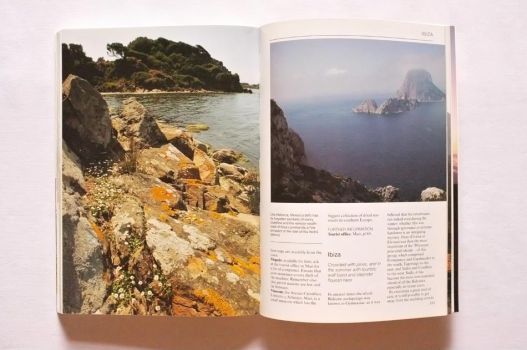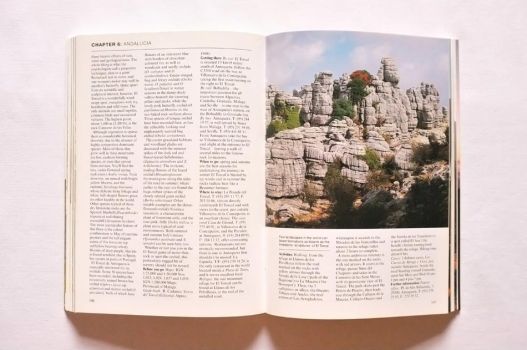“Compact, lavishly illustrated, intelligently written, it is a model of its kind.”
“A wonderful hybrid of practical travel guide and literary paean.”
Wild Spain
A Traveller’s Guide
£12.50
The author takes the reader south from the Pyrenees, across the central meseta of Castilla and Aragon and down to Andalucia. He finds wild mountain walks above the tourist resorts of Mallorca, dragon trees on the island of Tenerife and deserted beaches on the Delta del Ebro.
Dispatched next day with Royal Mail 2nd Class
- RRP: £12.50
- Format: 210 mm x 149 mm (8 ¼ x 5 4/5 in)
- Pages: 224
- Weight: 0.4 kg (0.9 lb)
- Pictures: 50 colour, 45 b/w
- Maps: 8 colour, 18 b/w
- Binding: Paperback
- ISBN: 978 1 873329 32 0
- Publication: 2000
With a compelling sureness of touch, the Pulitzer Prize-nominated author Frederic V. Grunfeld offers the reader an intimate knowledge of Spain gained over twenty-five years. He takes the intending traveller south from the Pyrenees, across the central meseta of Castilla and Aragon and down to Andalucia. He finds wild mountain walks above the tourist resorts of Mallorca and dragon trees on the island of Tenerife. Grunfeld’s flair for portraiture shines through wherever he goes: ‘Here are fieldstone houses and Romanesque churches’, he writes, ‘that seem to grow out of their hilltop sites like so many stone mushrooms. Except for telephone and electric lines you could easily imagine yourself back in the Middle Ages.’ Following the personal style set by the series, he indulges his own fancies, wandering through La Mancha in the steps of Don Quixote and tilting against his own windmills in the form of the shoe-box hotels of the Spanish Mediterranean.
This edition has been completely revised with the assistance of the Ministry of Environment in Madrid. The editors have revisited exploration zones and added hotels, itineraries and new train and bus information, with fax numbers, e-mail addresses and web-site details. The entire text has been reset, bringing this established guide-book fully up to date.
About the Series
WILD SPAIN: AN INTRODUCTION
Map of Spain Showing Chapter Areas
THE KEY TO SPAIN’S WILD PLACES
The Shape of the Wild
Wild Habitats
Protected Wild Places
To the Reader
CHAPTER 1: THE PYRENEES
La Garrotxa
Cadí-Moixeró
Aigüestortes & Estany de Sant Maurici
Vall d’Aran
Valle de Benasque
Ordesa
San Juan de la Peña & Canfranc
Roncesvalles
CHAPTER 2: NORTHERN SPAIN
Orduña & Sierra Salvada
Las Marismas de Santoña
Las Sierras Palentinas & Alto Campóo
Picos de Europa
Somiedo & Pajares
El Bierzo
Islas Cíes
CHAPTER 3: NORTH MESETA
Sierra de Gredos
Sierra de Guadarrama
La Cuenca Alta del Manzanares
Sierra de Ayllón
Sierra de la Demanda
Sierra de Peña de Francia
Camino de Santiago
CHAPTER 4: SOUTH MESETA
Serranía de Cuenca
Montes Universales
Sierra de Albarracín
Alto Tajo
Laguna de Gallocanta
Las Lagunas de Ruidera
Tablas de Daimiel
Montfragüe
CHAPTER 5: THE MEDITERRANEAN COAST
Aiguamolls de l’Empordà
Illes Medes
Montseny
Montserrat
Delta del Ebro
Puertos de Beseit
L’Albufera de Valencia
Sierra Espuña
CHAPTER 6: ANDALUCÍA
Sierras de Cazorla
Segura & Las Villas
Sierra Nevada & Las Alpujarras
El Torcal de Antequera
Fuente de Piedra
Lagunas de Córdoba
Grazalema
Laguna de Medina
Doñana
Las Marismas del Odiel
Sierra de Aracena
Sierra Morena
CHAPTER 7: THE BALEARIC ISLANDS
Mallorca
Archipiélago de Cabrera
Menorca
Ibiza
Formentera
CHAPTER 8: THE CANARY ISLANDS
Lanzarote
Fuerteventura
Gran Canaria
Tenerife
Gomera
Hierro
La Palma
Glossary
Further Reading
Useful Addresses
Frederic V. Grunfeld was born in Berlin in 1929 and educated in Switzerland, England and the United States. A writer and cultural historian, he lived in Mallorca from 1961 until his sudden death in 1987, shortly after completing Wild Spain. During those years he travelled from top to bottom of mainland Spain. He wrote extensively for Time-Life Books on Germany, France, Spain, Italy and Scandinavia as well as on places beyond Europe.
His books include Berlin, Prophets without Honour (a history of German Jewish thinkers and artists), The Art and Times of the Guitar and Wayfarers of the Thai Forest (a survey of the Akha tribe of Northern Thailand). He also wrote a biography of Auguste Rodin, for which he was nominated for the Pulitzer Prize. He was successively the editor of Queen, a roving editor of Horizon and contributing editor of Connoisseur.

THE PYRENEES
Here are fieldstone houses and Romanesque churches that seem to grow out of their hilltop sites like so many stone mushrooms. Except for telephone and electric lines you could easily imagine yourself back in the Middle Ages. Virtually the entire region makes good rambling country, and, indeed, some of the most enjoyable areas for walks and explorations are not among the loftiest peaks but further down, in gentler valleys like that of the Río Isábena, which is flanked by peaks in the 1,500-2,000-metre (4,900-6,500-foot) range. Here there is even a whole cathedral in miniature, one of the most astonishing Romanesque buildings in existence, which looks out across fields and meadows.
CAMINO DE SANTIAGO
The way from Roncesvalles, in the Pyrenees, to Santiago de Compostela in distant Galicia, is a matter of some 800 kilometres (500 miles). In the Middle Ages it was one of the great pilgrimage routes, which many people covered on foot and the most pious on their knees. For centuries there were miracles and apparitions to be seen at every turn of the road to Santiago: you could meet angels, beggars, kings and status-seekers – the Plantagenet king Edward I on horseback, St Francis of Assisi walking barefoot, and a certain Flemish wayfarer who is reputed to have carried a mermaid around with him, in a tub.


